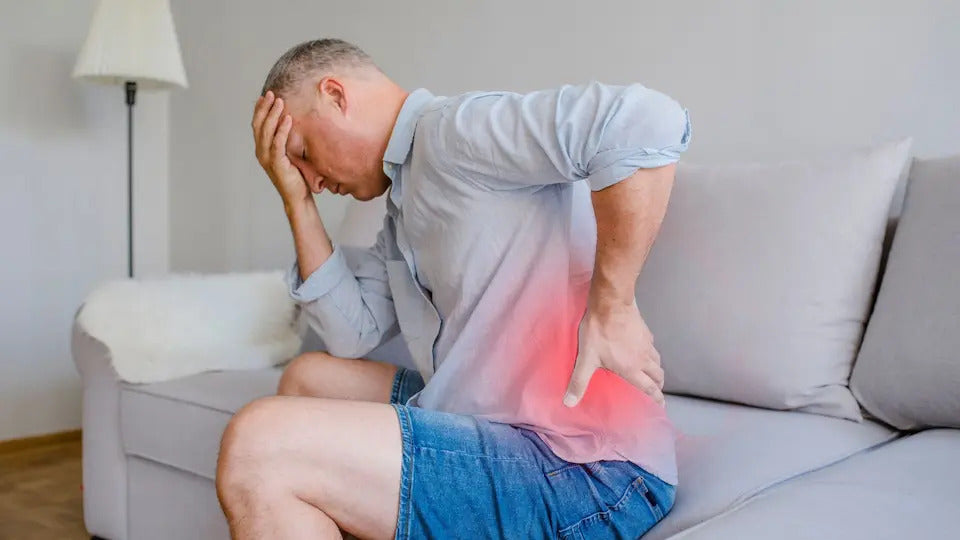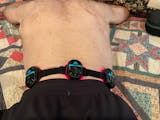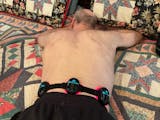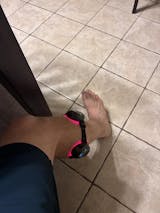Lower back pain is a common problem for many people, especially for those who spend long hours sitting at a desk or engage in physical activities. Stretching can provide relief, but combining stretching with advanced treatments like medical-grade red light therapy devices can significantly improve results. These devices enhance circulation, reduce muscle tension, and help speed up recovery. In this article, we’ll explore effective stretches for your lower back and how red light therapy can support these exercises.
Why Stretching Your Lower Back Is Important
Stretching is essential for anyone experiencing lower back pain or stiffness. By incorporating regular stretches into your routine, you can improve flexibility, prevent injuries, and relieve tension. Whether you're recovering from an injury or simply want to stay flexible, stretching can provide long-term relief.
Reduces Tension and Tightness
One of the main benefits of stretching is that it helps to relieve tightness in your muscles. When your lower back muscles are tight, they can pull on your spine, causing discomfort. Regular stretching helps to lengthen these muscles, reducing pressure on your spine and alleviating pain. When combined with red light therapy module, the benefits can be enhanced, as the light therapy stimulates blood flow, promoting faster muscle recovery.

Improves Flexibility and Mobility
Flexibility is key to preventing lower back pain. When your muscles are flexible, your joints can move more freely, reducing the risk of strain. Stretching regularly improves flexibility in your lower back, making it easier to bend, twist, and move without discomfort. Fda approved red light therapy devices for pain can further aid flexibility by improving circulation and reducing stiffness, which allows for a smoother stretching experience.
Enhances Circulation to the Area
Stretching is not only good for your muscles but also for your circulation. The act of stretching helps to pump blood to the muscles, which is essential for delivering oxygen and nutrients. Improved circulation accelerates the healing process and helps reduce inflammation. Using red light therapy module can boost this effect by stimulating deeper tissue layers, increasing blood flow and speeding up recovery.
Types of Lower Back Stretches to Try
There are many different stretches you can perform to target the lower back. These stretches can relieve tension, improve posture, and increase flexibility. In addition, using medical-grade red light therapy devices after stretching can enhance the benefits and help you feel better faster.
The Child’s Pose Stretch
The Child’s Pose is a gentle stretch that targets the lower back, hips, and thighs. To perform this stretch, kneel on the floor and sit back onto your heels. Reach your arms forward while keeping your forehead on the ground. This position stretches the lower back and helps release tension. Combining this stretch with red light therapy can help further relax your muscles and ease discomfort.
Knee-to-Chest Stretch
This is a simple yet effective stretch that targets the lower back and helps to relieve tightness. Lie on your back with your knees bent and feet flat on the floor. Bring one knee toward your chest, holding it with both hands. Hold for 20-30 seconds before switching sides. Medical-grade red light therapy devices can be used afterward to reduce muscle soreness and promote faster healing.

Cat-Cow Stretch
The Cat-Cow stretch is a great dynamic movement for improving spinal flexibility. Begin on your hands and knees, then alternate between arching your back up (Cat) and lowering it down (Cow). This stretch works the entire spine, including the lower back. After performing this stretch, using red light therapy can help reduce inflammation and muscle tension, enhancing the benefits.
Seated Forward Bend
This stretch targets both the lower back and hamstrings. Sit on the floor with your legs straight out in front of you. Reach forward with both hands, aiming to touch your toes. Hold the stretch for 20-30 seconds and repeat. This stretch can help relieve tightness in the lower back and hamstrings. Using medical-grade red light therapy devices afterward can promote relaxation and ease discomfort.
How Red Light Therapy Enhances Lower Back Stretching
Medical-grade red light therapy devices offer a unique approach to pain relief and muscle recovery. After stretching, using red light therapy can help your muscles relax more deeply, improving the effectiveness of the stretches and accelerating recovery.
Stimulates Blood Flow and Healing
Red light therapy works by penetrating deep into the skin to stimulate the circulation of blood. This promotes healing by delivering oxygen and nutrients to the affected area. For those experiencing tightness or soreness in the lower back, medical-grade red light therapy devices can speed up recovery by improving circulation and reducing muscle inflammation.
Reduces Pain and Muscle Soreness
One of the key benefits of red light therapy is its ability to reduce pain and inflammation. This makes it an excellent complement to stretching exercises. By using medical-grade red light therapy devices after a stretching session, you can experience faster relief from muscle soreness and reduced pain levels, allowing you to stretch more comfortably in the future.
Speeds Up Recovery Post-Stretching
After a good stretch, your muscles need time to recover. Red light therapy helps to accelerate this process. By stimulating cellular regeneration and reducing inflammation, red light therapy devices help muscles heal faster, so you can get back to stretching and exercising sooner without experiencing prolonged discomfort.

How Often Should You Stretch Your Lower Back?
The frequency of your stretching routine will depend on your lifestyle and the severity of your lower back pain. Regular stretching is important, but overdoing it can lead to strain.
Daily Stretches for Chronic Pain Relief
For those who suffer from chronic lower back pain, daily stretching is recommended. This can help maintain flexibility and reduce stiffness. Pairing daily stretches with red light therapy module - [PRUNGO FluxGo] can help maximize recovery and pain relief, especially for persistent discomfort.
Stretching 2-3 Times Per Week for Flexibility
If you don’t have chronic pain but still want to maintain a healthy lower back, stretching 2-3 times a week is enough. This helps improve flexibility and mobility without putting too much strain on your muscles. After each session, using red light therapy can enhance recovery and help keep your muscles relaxed.
Combining Stretches with Red Light Therapy
By incorporating medical-grade red light therapy devices into your stretching routine, you can achieve faster results. Use red light therapy after each stretching session to reduce inflammation and accelerate healing, allowing you to stretch more effectively in the long run.

The Best Time to Stretch Your Lower Back
The timing of your stretches can influence their effectiveness. Stretching at the right time can enhance flexibility and reduce the risk of injury.
Stretch After Waking Up
Stretching in the morning is an excellent way to relieve any stiffness from sleep. It helps to loosen up your lower back muscles and prepare your body for the day ahead. After stretching, consider using a red light panel to help reduce any inflammation and support the healing process.
Stretch Before and After Exercise
Warming up before physical activity and cooling down afterward is essential for preventing injury. Incorporating stretches into both your pre- and post-workout routines can reduce muscle tension. Using medical-grade red light therapy devices afterward can help your muscles recover and stay relaxed.
Stretch Before Bed for Relaxation
Stretching before bed can help release muscle tension accumulated throughout the day. It can also promote a better night’s sleep by relaxing your muscles. For added relief, use red light therapy masks before bedtime to calm your muscles and prepare your body for rest.
Conclusion
Stretching your lower back is a simple yet powerful way to relieve pain, improve flexibility, and maintain mobility. When combined with medical-grade red light therapy devices, the benefits are significantly enhanced. Red light therapy can help accelerate recovery, reduce inflammation, and promote overall healing, making it an excellent complement to your stretching routine. If you’re ready to take your back health to the next level, explore Prungo's range of products, which includes an advanced red light panel and red light therapy mask. These devices are designed to promote healing, reduce pain, and enhance flexibility. Take control of your back health today with Prungo’s innovative solutions.
















Share:
Wearable Red Light Therapy vs. Red Light Panels: A Guide to Choosing the Right Form Factor
How to Strengthen Knees